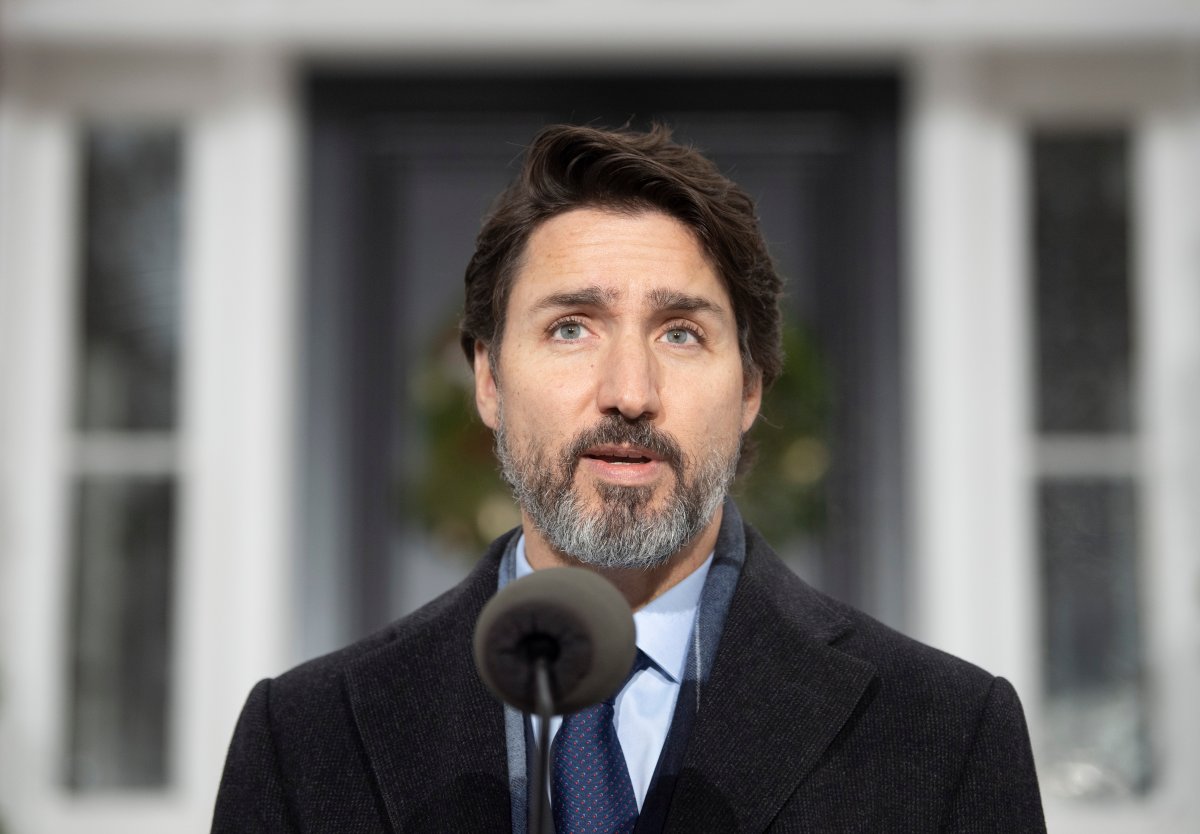‘Blursday’ is a COVID-inspired term describing what it’s like when each day blurs into the next. It also describes what polls on federal politics have been like for all of 2020.

Every poll on political standings released by Ipsos with Global News since January has shown nearly the same results: the Liberal Party led by Justin Trudeau holding on to a slight but consistent lead over the Conservatives regardless of their leader, while Jagmeet Singh and his NDP have been mired in a distant third. Both the Bloc Québécois and Green Party are also stuck in the polls pretty much where they finished the election in October 2019.
This mind-numbing polling stability has persisted despite an historic pandemic, the Conservative and Green parties changing leaders, unprecedented levels of public spending, the WE scandal, proroguing Parliament, a new speech from the throne, and an ambitious fall economic statement. Nothing has moved the vote numbers. Welcome to polling Blursday.
If you listen to pundits in Ottawa, we should expect all this to cease sometime in the spring of 2021. That’s when the Trudeau Liberals are expected to go for a majority government by cleverly engineering an election. As the wisdom goes, the Liberals will do this to take advantage of the recent trend among incumbent governments in Canada to be rewarded by grateful voters for their successful management of the COVID-19 crisis.
There’s a lot to recommend this consensus view. Satisfaction ratings for the Trudeau government are at highs they haven’t seen since they were first elected in 2015. Contrasting with the Liberals’ enviable performance numbers, the opposition parties have zero momentum. This is especially daunting for the Conservatives, who find themselves still stuck in second even after playing the biggest card a party can play to improve its electoral fortunes — changing leaders.
As for Singh and the NDP, they continue to trail well behind the Trudeau Liberals as the preferred standard-bearer for Canada’s progressive voters. The NDP’s weak polling performance not only affects its own electoral prospects, but it also hurts the ability of the Conservatives to win tight races in swing ridings in suburban British Columbia and Ontario, where the 2021 election will be won or lost.

Taking all of this into account, the consensus wisdom is right. Things do look good for the Liberals.
Except for the polling Blursday. Despite their strong satisfaction scores and the weaknesses of their opponents, the Liberals have yet to build a meaningful lead over the other parties.
In Ipsos’s most recent political polling for Global News, the gap between the Liberals and Conservatives is only three points. While that’s a bit better than how the Liberals performed in the 2019 election, they will need a consistent lead of at least six or seven points before they can start seriously thinking about winning a majority.
- What is a halal mortgage? How interest-free home financing works in Canada
- Capital gains changes are ‘really fair,’ Freeland says, as doctors cry foul
- Ontario doctors offer solutions to help address shortage of family physicians
- Canada will take bigger economic hit than U.S. if Trump wins election: report
Why does the polling Blursday continue given the unprecedented satisfaction numbers the Liberals are garnering? It’s because partisanship is out of politics for the moment. Canadians just aren’t thinking about elections right now. They are completely focused on fighting the pandemic and are behind the government’s efforts to do that. But that’s not the same as voting for the Liberal Party. At least not yet.
What threatens to shake up polling Blursday and affect the timing of the next election is the rollout of vaccines. Contrary to the preoccupation with public reluctance about vaccines and especially anti-vaxxers, the real vaccine challenge the government faces is keeping up with the enormous immediate demand.
Canadians are putting a lot of stake in vaccines helping us return to normal. That’s why around 20 per cent of us are ready to take the vaccine today, no questions asked. That’s between six and seven million Canadian adults who are ready to roll up their sleeves tomorrow. The government estimates they will only be able to accommodate three million or so by the end of March.
This significant mismatch between vaccine supply and demand will become even more evident with early success. There’s another 25 per cent of Canadians just waiting to see if all goes well for the early adopters. If it does, they will be ready to line up soon after for a shot. How happy will these voters be when they are told by the prime minister they will need to wait until August or even later to be vaccinated?

The vaccine supply issue will start coming into focus in March or so, when we mark the anniversary of the first Canadian COVID-19 lockdowns. March also corresponds with when we are told the Liberals are contemplating going to the polls. At that point, if you’re a Liberal, polling Blursday might not be such a bad thing after all.
Darrell Bricker is CEO, Ipsos Public Affairs. He is also the author of ‘NEXT: Where to Live, What to Buy, and Who Will Lead Canada’s Future.’ Harper Collins, 2020.




Comments